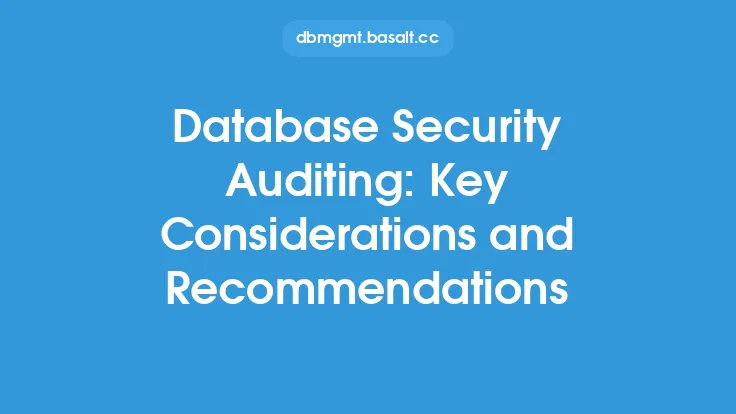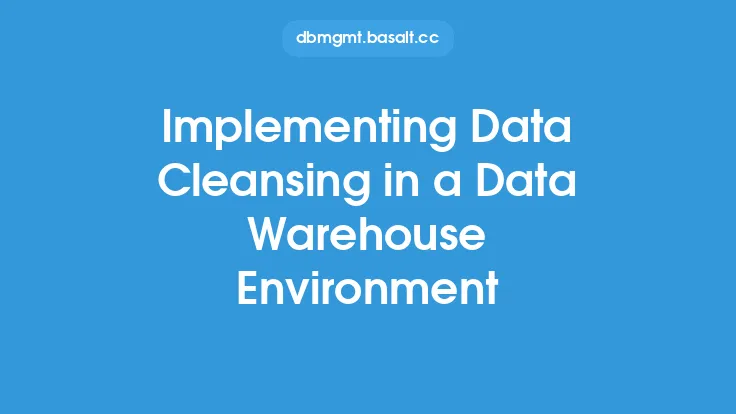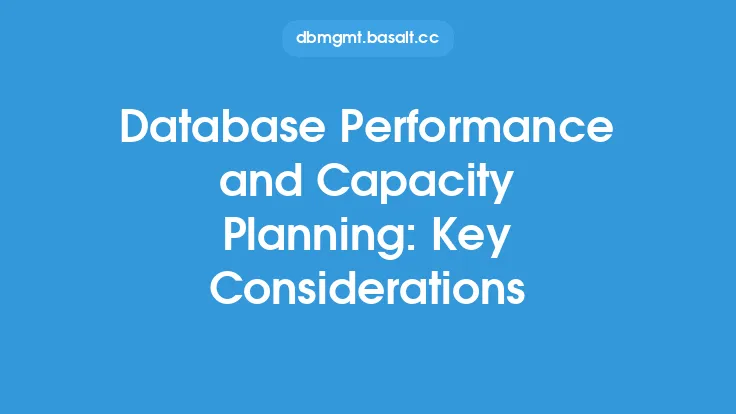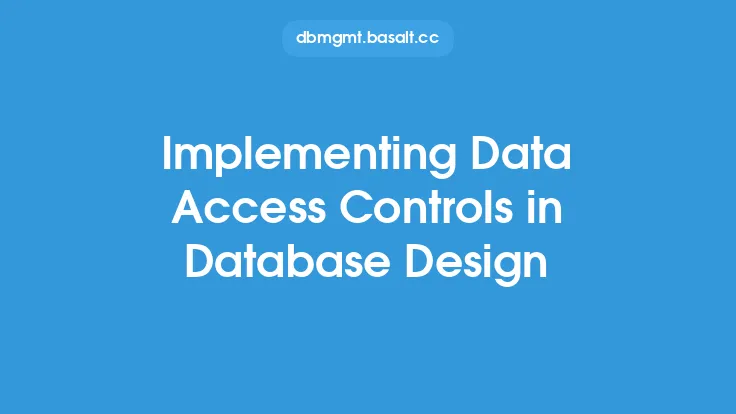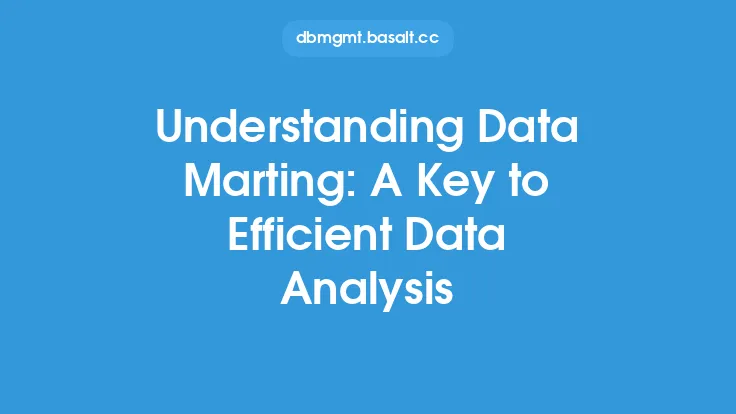Implementing a data mart in a database environment requires careful consideration of several factors to ensure that the data mart is properly designed, implemented, and maintained. A data mart is a subset of a data warehouse that is designed to support a specific business function or department, and it typically contains a subset of the data found in the data warehouse. When implementing a data mart, there are several key considerations that must be taken into account.
Introduction to Data Marting
Data marting is a process of extracting data from a data warehouse and transforming it into a format that is easily accessible and usable by business users. The goal of data marting is to provide business users with a simplified view of the data that is relevant to their specific needs, while also improving query performance and reducing the complexity of the data. Data marting involves creating a physical or logical subset of the data warehouse, which is optimized for querying and analysis.
Data Mart Design Considerations
When designing a data mart, there are several key considerations that must be taken into account. First, the data mart must be designed to support the specific business function or department that it will be serving. This means that the data mart must contain the specific data elements that are required by the business users, and it must be organized in a way that makes it easy for users to access and analyze the data. Second, the data mart must be designed to optimize query performance, which means that the data must be organized and indexed in a way that minimizes the time it takes to retrieve the data. Finally, the data mart must be designed to ensure data consistency and integrity, which means that the data must be validated and verified to ensure that it is accurate and reliable.
Data Mart Implementation Considerations
When implementing a data mart, there are several key considerations that must be taken into account. First, the data mart must be implemented using a database management system that is capable of supporting the data mart's specific requirements. This may involve using a relational database management system, a multidimensional database management system, or a combination of both. Second, the data mart must be populated with data from the data warehouse, which may involve using extract, transform, and load (ETL) tools or other data integration techniques. Finally, the data mart must be maintained and updated on a regular basis to ensure that the data remains accurate and up-to-date.
Data Mart Maintenance and Updates
Maintaining and updating a data mart is an ongoing process that requires careful planning and execution. The data mart must be updated on a regular basis to reflect changes in the underlying data, and it must be monitored to ensure that it is performing optimally. This may involve using data quality tools to validate and verify the data, as well as using performance monitoring tools to track query performance and optimize the data mart's design. Additionally, the data mart must be backed up and recovered on a regular basis to ensure that the data is protected in the event of a failure or disaster.
Data Mart Security and Access Control
Data mart security and access control are critical considerations that must be taken into account when implementing a data mart. The data mart must be designed to ensure that only authorized users have access to the data, and it must be protected against unauthorized access and malicious activity. This may involve using authentication and authorization mechanisms, such as user IDs and passwords, as well as using encryption and other data protection techniques to protect the data. Additionally, the data mart must be designed to ensure that users only have access to the data that they need to perform their jobs, and that they do not have access to sensitive or confidential data.
Data Mart Scalability and Performance
Data mart scalability and performance are critical considerations that must be taken into account when implementing a data mart. The data mart must be designed to support a large number of users and a high volume of queries, and it must be optimized to ensure that query performance is optimal. This may involve using distributed database architectures, parallel processing techniques, and other performance optimization techniques to ensure that the data mart can handle the required workload. Additionally, the data mart must be designed to scale horizontally and vertically to support growing demands and increasing data volumes.
Data Mart Data Governance
Data mart data governance is a critical consideration that must be taken into account when implementing a data mart. The data mart must be designed to ensure that the data is accurate, complete, and consistent, and it must be governed by a set of rules and policies that ensure data quality and integrity. This may involve using data governance frameworks, data quality tools, and other techniques to ensure that the data is properly managed and maintained. Additionally, the data mart must be designed to ensure that data is properly documented and metadata is properly managed to support data discovery and reuse.
Data Mart Tools and Technologies
There are several tools and technologies that can be used to implement a data mart, including relational database management systems, multidimensional database management systems, ETL tools, data quality tools, and data governance frameworks. The choice of tool or technology will depend on the specific requirements of the data mart, as well as the skills and expertise of the implementation team. Additionally, the data mart must be designed to integrate with other tools and technologies, such as business intelligence platforms, data visualization tools, and reporting tools, to support a wide range of business intelligence and analytics use cases.
Conclusion
Implementing a data mart in a database environment requires careful consideration of several factors, including data mart design, implementation, maintenance, security, scalability, and data governance. By taking a structured approach to data mart implementation and using the right tools and technologies, organizations can create a data mart that provides business users with easy access to the data they need to perform their jobs, while also improving query performance and reducing the complexity of the data. Additionally, a well-designed data mart can provide a foundation for business intelligence and analytics, and can help organizations to make better decisions and drive business outcomes.
